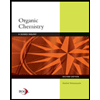
(a)
Interpretation: The structure corresponding to the given name,
Concept introduction: The systematic naming of organic compound is given by IUPAC. The full form of IUPAC is International Union of Pure and Applied Chemistry. The naming of organic compound is done such that the structure of organic compound is correctly interpreted from the name.
(b)
Interpretation: The structure corresponding to the given name,
Concept introduction: The systematic naming of organic compound is given by IUPAC. The full form of IUPAC is International Union of Pure and Applied Chemistry. The naming of organic compound is done such that the structure of organic compound is correctly interpreted from the name.
(c)
Interpretation: The structure corresponding to the given name,
Concept introduction: The systematic naming of organic compound is given by IUPAC. The full form of IUPAC is International Union of Pure and Applied Chemistry. The naming of organic compound is done such that the structure of organic compound is correctly interpreted from the name.
(d)
Interpretation: The structure corresponding to the given name,
Concept introduction: The systematic naming of organic compound is given by IUPAC. The full form of IUPAC is International Union of Pure and Applied Chemistry. The naming of organic compound is done such that the structure of organic compound is correctly interpreted from the name.
(e)
Interpretation: The structure corresponding to the given name,
Concept introduction: The systematic naming of organic compound is given by IUPAC. The full form of IUPAC is International Union of Pure and Applied Chemistry. The naming of organic compound is done such that the structure of organic compound is correctly interpreted from the name.
(f)
Interpretation: The structure corresponding to the given name,
Concept introduction: The systematic naming of organic compound is given by IUPAC. The full form of IUPAC is International Union of Pure and Applied Chemistry. The naming of organic compound is done such that the structure of organic compound is correctly interpreted from the name.
Want to see the full answer?
Check out a sample textbook solution
Chapter 11 Solutions
Connect Online Access 1-Semester for Organic Chemistry
- Which is a bond-line drawing of (CH3)2CHCH2OC(CH3)3 a. b. CL d. d a barrow_forwardWhich of the compounds would have the weakest conjugate base? Post acetylene with a Ka = 1 X 10-25 2-chloroethanol with a Ka = 2 X 10-14 cyclohexanone with a Ka = 5 X 10-16 cyclopentadiene with a Ka = 1 X 10-15arrow_forwardIdentify the meso compound(s). OH OH I only Il only I and II I, II, and III II HO OH OHarrow_forward
- Which compound has the highest boiling point? Q= OH OHarrow_forwardWhat is/are the major product(s) of this reaction? HBr (R)-3-bromo-2,3-dimethylpentane only (S)-3-bromo-2,3-dimethylpentane only a 50:50 mixture of (R) and (S)-3-bromo-2,3-dimethylpentane a 70:30 mixture of (R) and (S)-3-bromo-2,3-dimethylpentanearrow_forwardWhich energy diagram represents a two step reaction where the first step is the rate determining ste E E Reaction Coordinate A Reaction Coordinate C Do NOT Copy or Post OGMU OA OB Ос D E E M Reaction Coordinate B Reaction Coordinate D Aarrow_forward
- Give the best description for the regioselectivity and stereospecificity in the hydroboration-oxidation of an alkene. Markovnikov orientation with syn-addition Markovnikov orientation with anti-addition Anti-Markovnikov orientation with syn-addition Anti-Markovnikov orientation with anti-addition Markovnikov orientation with both syn- and anti-additionarrow_forwardWhich atoms can the negative charge on atom 3 be moved to using resonance theory? 4 6 8 CH 3 2 5 7 only 1, 5, 7 only 2, 4, 6 only 5, 8 only 1 only 2,4arrow_forwardO What is the major product of this reaction? OTS NaOEt OEt OEt ACMUAvousernkarrow_forward
- All of the following are more acidic than water (H2O) EXCEPT: a. H d. HO a OH OHarrow_forwardWhat type of reaction steps are represented below? OH H-Br LB = Time Remaining H = H nucleophilic attack, followed by proton transfer proton transfer, followed by loss of a leaving group proton transfer, followed by nucleophilic attack loss of a leaving group, followed by loss of a leaving group H₂O:arrow_forwardIf the 2 in 1 parenteral nutrition order provides 1678 kilocalories daily, what rate ml/hr should the md recommend for the Intralipid to provide the remaining daily kilocalories? Lipid: 10% Intralipids, infuse daily over a 12 hour period at a sufficient rate to provide remaining caloriesarrow_forward
 Organic Chemistry: A Guided InquiryChemistryISBN:9780618974122Author:Andrei StraumanisPublisher:Cengage Learning
Organic Chemistry: A Guided InquiryChemistryISBN:9780618974122Author:Andrei StraumanisPublisher:Cengage Learning
